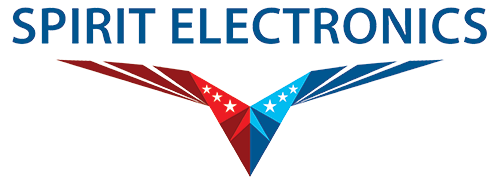While solder, the metallic alloy that is melted and reflowed to create joints between components and printed circuit boards, may not be as exciting and glamorous as the intricate webwork of copper and polysilicon in an integrated circuit, it is still vital to the creation of an electronic device. Without proper solder connections, even the most advanced of integrated circuits is reduced to an ineffectual paperweight, lacking any pathways for power and signals to travel over. Being able to perform a solder quality inspection is, therefore, an integral part of any failure analyst’s repertoire of skills.
As with any failure analysis study, solder quality inspections begin with non-destructive tests, in order to try and pinpoint defects without inadvertently eliminating any evidence. X-ray inspection is one of the principal methods of inspecting solder quality non-destructively, as it is easy to characterize joints and generate statistics that can be useful in determining whether to accept or reject a given process. Percent voiding (the area of a given joint where there is a void, or air pocket, in the solder as a percentage of the total area of the joint), ball size, and ball shape (whether the solder balls of a BGA appear round and uniform, or squashed and stretched out of shape) can all provide insight into the reliability of a given solder process. X-ray tomography systems, which produce three-dimensional models of the devices they analyze, can provide an even greater depth of detail of solder joint issues; depending on resolution, they can reveal joint defects, like “head-in-pillow” or non-wetting. Even the relatively minuscule C4 bumps used to connect “flip-chip” die to their substrate can be examined this way; these particular devices are also good candidates for acoustic microscopy at ultra-high frequencies (generally greater than 150MHz), which can reveal cracked or otherwise malformed joints.
While non-destructive test methods provide strong indicators of possible failures or quality issues, they generally need to be corroborated by a more direct view of the failure; destructive testing in solder quality inspections is used to confirm defects noted during non-destructive analysis, and to reveal defects of a size or nature that masked them from less intrusive methods. One of the most common techniques used to analyze solder joints in this fashion is the micro-section; by grinding into and polishing a solder joint, many defects can be viewed and photographed directly. Micro-sectioning also provides information about intermetallic compound (IMC) formation and solder grain structure, both of which can be indicators that can be used to characterize a soldering process. Micro-sectioning provides a high level of detail about a limited number of solder joints on a component; the complementary technique, dye penetrant testing, offers a broader view of all of a component’s joints. By immersing a sample in fluorescent or an otherwise brightly colored dye, then prying the sample from the board, an analyst can locate cracked or non-wetted joints across the whole of a sample.
While imaging techniques and other direct methods of seeing defects are often easiest to understand, generating data through electrical characterization is also an important part of solder quality inspection. Reliability tests, such as HALT or other stress testing, provide important simulated data on how a device might age in the field; following these tests up with the aforementioned techniques provides a more comprehensive dataset for understanding a soldering process. Even very basic tests, like placing a device under bias in an environmental chamber and varying the temperature across the sample’s specified operating range, can reveal defects and process weaknesses that might otherwise go unnoticed.
In some cases, solder quality inspection does not have anything to do with the structure of the solder, but of the materials that comprise it. RoHS certification requires that solder be free of lead, in order to mitigate some of the environmental damage posed by e-waste. Tools like energy dispersive spectroscopy or x-ray fluorescence provide data about the elemental composition of a given sample and can be used to screen a process to ensure that lead-free solder has been used for all components.
Though solder quality inspection may take on a variety of different forms, there is always one point of commonality; all are designed to generate data to act as a springboard for continuous improvement. By more thoroughly understanding the solder processes used to create an electronic device, manufacturers can see potential weaknesses and reliability issues. In-depth analysis of solder quality is, therefore, invaluable for any manufacturer looking to deliver a more robust product.

